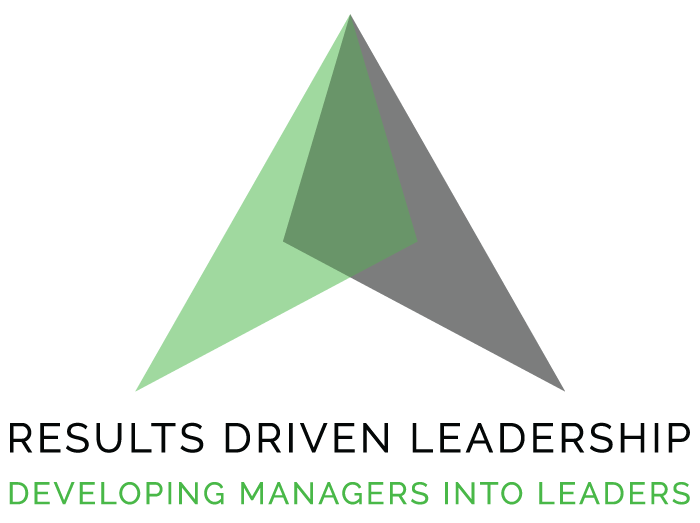TABLE OF CONTENTS
The value of having a competency-based framework in your company.
As businesses evolve, so must their approach to measuring employee performance. Using traditional job titles and descriptions no longer suffices. To attract top talent, companies must adopt a competency-based framework. This system identifies the skills and abilities necessary for success in a particular role or industry, taking into account each employee’s unique strengths and weaknesses.
So, what exactly is a competency-based framework? Simply put, it is a system that identifies the skills and abilities necessary for success in a particular role or industry. Rather than focusing solely on job requirements, a competency-based framework considers each employee’s strengths and weaknesses.

What are competencies?
Competencies fall into two categories | Skills Based and Inherent
The difference between skills-based competencies and inherent competencies lies in their origin and nature:
Skills-based competencies:
Skills-based competencies are acquired through training, education, and experience. Hats why we look at resumes and look for applicable experience. These competencies are typically related to specific tasks, functions, or technical areas. They are developed over time through deliberate effort and practice.
Skills-based competencies can be learned, trained, and enhanced through structured programs, on-the-job experience, and professional development activities. Examples of skills-based competencies include proficiency in a programming language, project management skills, or proficiency in operating certain machinery.
Inherent competencies:
Inherent competencies, also known as inherent traits or qualities, are characteristics that individuals possess naturally or inherently. These competencies are often related to personal attributes, behaviors, or attitudes contributing to success in various areas of life. Inherent competencies are typically not learned or acquired through training but are ingrained in an individual’s personality or inherent nature.
It is important to note that while skills-based competencies can be developed and improved through training, inherent competencies are considered more difficult to change as they are deeply rooted in an individual’s personality and characteristics. Both types of competencies are valuable and important in different contexts, and a well-rounded individual may possess a combination of skills-based and inherent competencies.
While many competencies can be developed and enhanced through training and experience, certain inherent qualities or traits are often considered difficult if not impossible, to train effectively.

List of 10 Competencies
Here is a list of 10 competencies that are typically considered challenging to impossible to train. Someone either has them or they don’t:
Integrity: The quality of being honest, ethical, and principled in one’s actions and decisions.
Empathy: The ability to understand and share the feelings and perspectives of others.
Resilience: The capacity to bounce back from setbacks, adapt to challenges, and maintain a positive attitude in the face of adversity.
Creativity: The ability to think imaginatively, generate innovative ideas, and approach problems from unique perspectives.
Intuition: The instinctive understanding or insight into situations or people, often referred to as a “gut feeling.”
Authenticity: The quality of being genuine, true to oneself, and transparent in interactions with others.
Ambition: The drive and determination to set ambitious goals, strive for continuous improvement, and pursue success.
Curiosity: The innate desire to seek knowledge, ask questions, and explore new ideas or possibilities.
Charisma: The personal magnetism and ability to influence and inspire others.
Positive Attitude: The disposition to maintain optimism, enthusiasm, and a constructive mindset, even in challenging circumstances.
Negative Competencies. What about the other side of competencies?
Negative competencies, often referred to as detrimental or counterproductive, can indeed hinder employees’ success and impact their performance. Here is a list of five negative competencies that can undermine employee success:
Poor Communication: Ineffective communication skills, such as being a poor listener, lacking clarity in expressing ideas, or being overly aggressive or passive in communication, can lead to misunderstandings, conflicts, and a breakdown in collaboration.
Lack of Accountability: Employees who consistently avoid taking responsibility for their actions, fail to meet deadlines, or deflect blame onto others hinder their own success and the team’s success. Lack of accountability can erode trust, undermine credibility, and impede progress.
Resistance to Change: A strong resistance to change, whether due to fear, reluctance, or a rigid mindset, can impede an employee’s ability to adapt to new technologies, processes, or organizational changes. This resistance can lead to missed opportunities for growth and innovation.
Inflexibility: Being inflexible or resistant to different perspectives, ideas, or approaches can hinder collaboration, hinder problem-solving, and limit an employee’s ability to adapt to diverse work environments. Inflexibility can hamper teamwork and hinder individual and organizational growth.
Lack of Initiative: Employees who consistently display a lack of initiative, procrastinate, or fail to take proactive action can hinder their own productivity and become a heavy burden on their supervisor. Without initiative, employees often miss opportunities to contribute and slow down getting their duties completed on time, on budget and at the expected level of quality. Often their work must be redone or the slack taken up by someone else, creating a sense of unfairness. Of course, their supervisor has to manage them more closely, taking up more of their valuable time to micro-manage the poor performer.
Negative competencies are often the reason behind individuals’ struggles and failures in their jobs, leading to disengagement and, in some cases, termination. Here’s why these competencies contribute to such outcomes:
Impaired Performance: Negative competencies can hinder an individual’s ability to perform at their best. Poor communication, lack of accountability, resistance to change, inflexibility, or lack of initiative can undermine productivity, teamwork, and overall job performance. Consistently exhibiting these negative behaviors can lead to missed deadlines, errors, and subpar results.
Strained Relationships: Negative competencies can strain relationships with colleagues, managers, and other stakeholders. Poor communication, lack of accountability, and inflexibility can lead to conflicts, misunderstandings, and a breakdown in collaboration. Negative behaviors can create a toxic work environment, erode trust, and impede teamwork, causing disengagement and reduced job satisfaction.
Stagnation and Missed Opportunities: When individuals display negative competencies, they often resist change, avoid taking responsibility, and lack the initiative to seize new opportunities. This can lead to missed chances for professional growth, skill development, and advancement. Without actively addressing and improving negative competencies, individuals may find themselves stuck in unfulfilling roles or missing out on new challenges and career prospects.
Cultural Misalignment: Negative competencies can clash with an organization’s culture’s values, norms, and expectations. If an individual consistently demonstrates behaviors that run counter to the organization’s core principles, it can lead to a poor cultural fit and subsequent disengagement. In such cases, employers may find it necessary to terminate employment to preserve the organizational culture and maintain high-performance standards.

Negative competencies can significantly impact coworkers and the overall work environment. When individuals exhibit negative competencies such as poor communication, lack of accountability, or resistance to change, it can create a toxic atmosphere and impede collaboration.
Coworkers may experience increased frustration, decreased trust, and reduced morale as a result. Negative competencies can hinder effective teamwork, compromise the quality of work, and impede productivity.
Moreover, negative behaviors can create a ripple effect, leading others to adopt similar attitudes or behaviors. This can disrupt the harmony and cohesion within the team, resulting in reduced engagement and an overall decline in team performance.
When a manager allows an employee who displays negative competencies to continue unchecked, it can harm leadership effectiveness and respect within the organization. Allowing such behaviors sends a message that poor performance or negative attitudes are tolerated, eroding the manager’s authority and credibility.
Other team members may lose respect for the manager’s ability to enforce standards and maintain a positive work environment. It can also create a sense of unfairness and frustration among high-performing employees who witness the lack of accountability for negative behaviors.
By not addressing negative competencies, the manager misses an opportunity to performance manage the employee, which can hinder the team’s overall success and the manager’s ability to terminate the problem employee due to lack of documentation. Effective leadership requires addressing negative competencies promptly and demonstrating a commitment to maintaining a culture of excellence and professionalism.
It is crucial for organizations to address negative competencies promptly to maintain a positive work environment and foster healthy and productive relationships among coworkers.
The Value of DISC
Incorporating DISC assessments as part of a competency-based framework holds immense importance in understanding and maximizing the potential of individuals within an organization.
The DISC assessment provides valuable insights into an individual’s behavioral tendencies, communication styles, and work preferences, offering a holistic understanding of their strengths and areas for development. By utilizing DISC assessments within a competency-based framework, organizations can create a more targeted approach to talent management, including hiring, team formation, and professional development.
It enables leaders to tailor their management strategies, leverage individuals’ strengths, and address potential conflicts or skills gaps. With this comprehensive understanding of their workforce, companies can foster stronger collaboration, enhance communication, and create a harmonious work environment that optimizes productivity and drives overall organizational success.
DISC assessments within a competency-based framework empower organizations to align their talent effectively, unlock the full potential of their workforce, and cultivate a culture of continuous improvement and growth.
Ready to gain valuable insights into your behavioral tendencies and unlock your potential? Take advantage of our offer and click the link below for a FREE DISC assessment. By understanding your unique DISC profile, you’ll gain a deeper understanding of your communication style, work preferences, and behavioral strengths.
Discover how a DISC assessment can empower you to enhance your interpersonal relationships, improve collaboration, and optimize your performance in both personal and professional settings. Don’t miss this opportunity to gain valuable self-awareness and pave the way for personal and career growth. Click here now to access your FREE DISC assessment.
Addressing negative competencies through performance management, coaching, and professional development can allow individuals to improve and succeed in their roles. However, persistent negative competencies that go unaddressed can ultimately result in disengagement, decreased productivity, and, in severe cases, termination.
That is a very important aspect of the Talent Mastery Framework. You must develop a competency-based interview process with competency-based interview questions and utilize a DISC assessment. Approaching new hires with this piece of the framework solidly trained and in place dramatically decreases the likelihood of making a bad hire who has the negative traits you must avoid.
It also increases the likelihood that you are selecting the best fits based on your company’s tailored competencies, both skilled and inherent.
You then support this framework in your organization by building your values and performance expectations (reviews) around a competency-based foundation.

Why arn’t more companies using DISC?
But there is a big problem with this! While competency-based interviewing has gained recognition for its effectiveness in assessing candidates, it is still not universally adopted by hiring decision-makers.
Statistics indicate that a significant portion of hiring processes still do not utilize a competency-based interview approach. According to a study conducted by LinkedIn, only 45% of hiring managers and recruiters worldwide reported using behavioral-based questions, a key component of competency-based interviews.
Additionally, a survey by the Society for Human Resource Management (SHRM) revealed that only 23% of HR professionals consistently used competency models in their recruitment and selection processes.
These numbers highlight the prevalence of traditional interview methods that rely heavily on generic questions and subjective judgments rather than structured assessments of specific competencies. Such practices may limit the ability to accurately evaluate candidates’ competencies,’ skills, behaviors, and potential for success in the desired roles.
I often share with my clients the fact that in my multi-decade career, I never fired anyone for lack of experience. It was always because of negative behavior or being a poor fit behaviorally for their position. So I ask you. Why do employers put so much emphasis on a candidate’s experience? The priority for selection must be reversed. To gain a much-improved level of hiring success, employers should focus on hiring the right “human,” not the right experience. With a behavior-based interview process hiring decision-makers will find the best fit for their role and reduce bad hires dramatically.
There is a lot to learn about implementing and managing a competency-based hiring process. Take our course on How To Hire Great People, learn the best practices and processes for a competency-based interview process, and get all the tools you need to support it.
Being a successful manager requires a combination of technical and soft skills, as well as a willingness to learn from mistakes and adapt to changing circumstances. By avoiding the nine pitfalls outlined above, managers can increase their chances of success and create a more positive and productive work environment.
Effective communication, goal setting, and delegation are key components of successful management. Managers who provide clear expectations and feedback to their team, treat all team members fairly, and hold themselves accountable for their own mistakes can build trust and respect within their team and achieve better results.
In addition, prioritizing professional development and staying up to date on the latest trends and best practices can help managers stay ahead of the curve and provide value to their team and organization. By addressing performance issues proactively and providing feedback and coaching to help team members improve, managers can foster a culture of continuous improvement and growth.
Ultimately, the success of a manager depends on their ability to build and maintain positive relationships with their team members, provide clear direction and support, and lead by example. By avoiding the nine common pitfalls outlined in this blog and focusing on these core principles of effective management, managers can achieve greater success and create a more positive and productive work environment.
In conclusion, there are many ways you might be unknowingly tanking your own success. However, the good news is that by being aware of these pitfalls and making a concerted effort to avoid them, you can turn things around and achieve the success you deserve. So take a long hard look at your habits and behaviors, and make the necessary changes to achieve the success you’ve been working so hard for.
Conclusion:
Not having a competency-based framework in your company can lead to several employee management and development challenges. Traditional hiring, talent management, development, and performance management methods are insufficient and may lead to inaccurate employee performance assessments and limited development opportunities.
Companies that adopt competency-based frameworks can gain a more comprehensive understanding of employee skills and capabilities, which can help drive performance and improve business outcomes. Invest in a competency-based framework today, and see how you can create a brighter future for your business.
Adopting a competency-based framework can lead to a more efficient and effective workforce, with benefits that include improved hiring processes, increased employee engagement, enhanced performance management, improved training and development, and increased retention rates.
Are you ready to unlock the full potential of your company’s talent?
Contact us and take the first step towards building a Talent Mastery Framework to drive success and growth. Our complete toolkit and training program empowers you with the knowledge and tools to create a framework that aligns your workforce, identifies high-potential employees, and maximizes their capabilities. Don’t miss out on this opportunity to transform your organization. Contact us today, and let’s embark on the journey to Talent Mastery Together.





